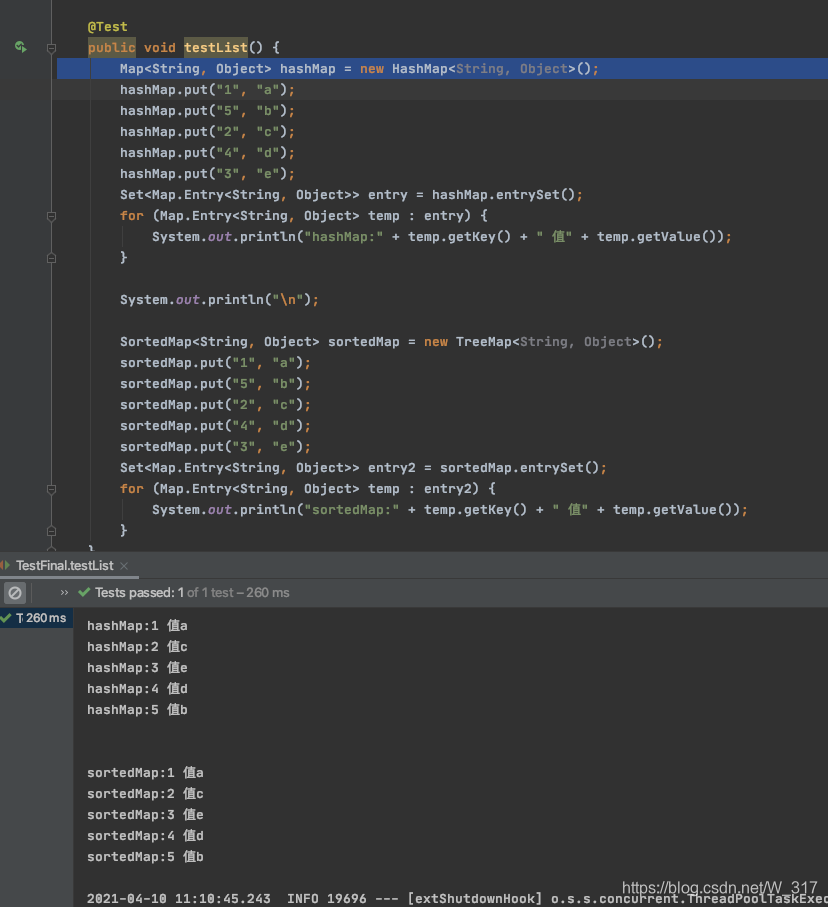SortedMap接口主要提供有序的Map实现。SortedMap接口是排序接口,只要是实现了此接口的子类,都属于排序的子类,TreeMap也是此接口的一个子类
Map的主要实现有HashMap,TreeMap,HashTable,LinkedHashMap。
TreeMap实现了SortedMap接口,保证了有序性。默认的排序是根据key值进行升序排序,也可以重写comparator方法来根据value进行排序。


HashMap与TreeMap的比较

Map<String, Object> hashMap = new HashMap<String, Object>();hashMap.put("1", "a");hashMap.put("5", "b");hashMap.put("2", "c");hashMap.put("4", "d");hashMap.put("3", "e");Set<Map.Entry<String, Object>> entry = hashMap.entrySet();for (Map.Entry<String, Object> temp : entry) {System.out.println("hashMap:" + temp.getKey() + " 值" + temp.getValue());}System.out.println("\n");SortedMap<String, Object> sortedMap = new TreeMap<String, Object>();sortedMap.put("1", "a");sortedMap.put("5", "b");sortedMap.put("2", "c");sortedMap.put("4", "d");sortedMap.put("3", "e");Set<Map.Entry<String, Object>> entry2 = sortedMap.entrySet();for (Map.Entry<String, Object> temp : entry2) {System.out.println("sortedMap:" + temp.getKey() + " 值" + temp.getValue());}看上去还以为HashMap也保证了有序性,其实是随机的,如果值设置的复杂一点,如下例

Map<String,Object> hashMap = new HashMap<String,Object>();hashMap.put("1b", "a");hashMap.put("2", "b");hashMap.put("4b", "d");hashMap.put("3", "c");hashMap.put("2b", "d");hashMap.put("3b", "c");Set<Map.Entry<String, Object>> entry = hashMap.entrySet();for(Map.Entry<String, Object> temp : entry){System.out.println("hashMap:"+temp.getKey()+" 值"+temp.getValue());}System.out.println("\n");SortedMap<String,Object> sortedMap = new TreeMap<String,Object>();sortedMap.put("1b", "a");sortedMap.put("2", "b");sortedMap.put("4b", "d");sortedMap.put("3", "c");sortedMap.put("2b", "d");sortedMap.put("3b", "c");Set<Map.Entry<String, Object>> entry2 = sortedMap.entrySet();for(Map.Entry<String, Object> temp : entry2){System.out.println("sortedMap:"+很显然只有TreeMap保证了有序性。










原创...)
软件研发过程)



)



平面上的坐标)